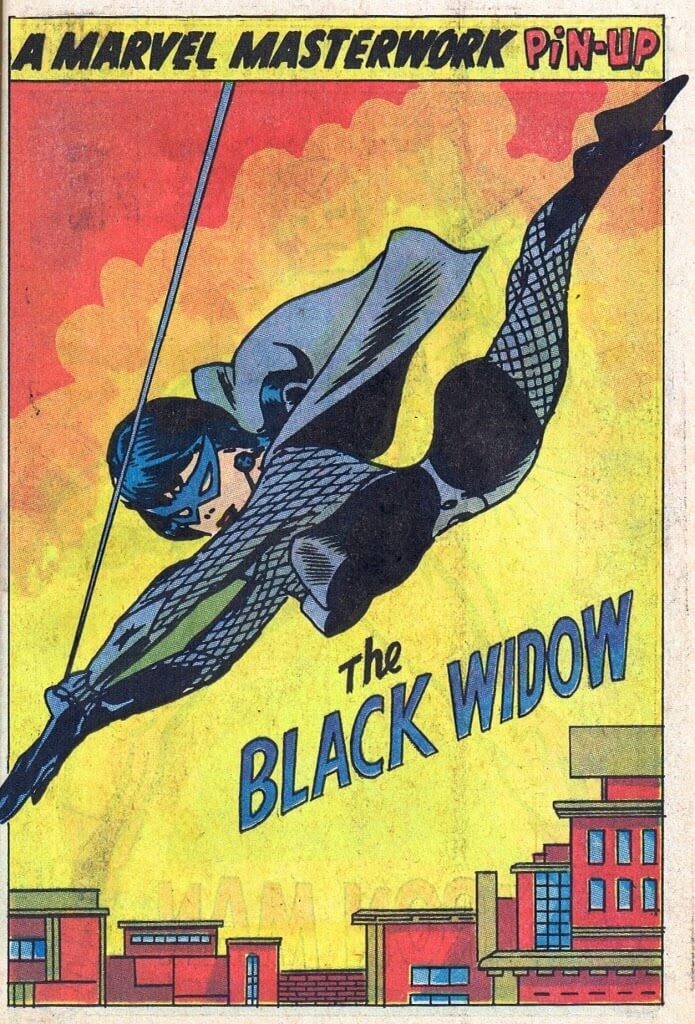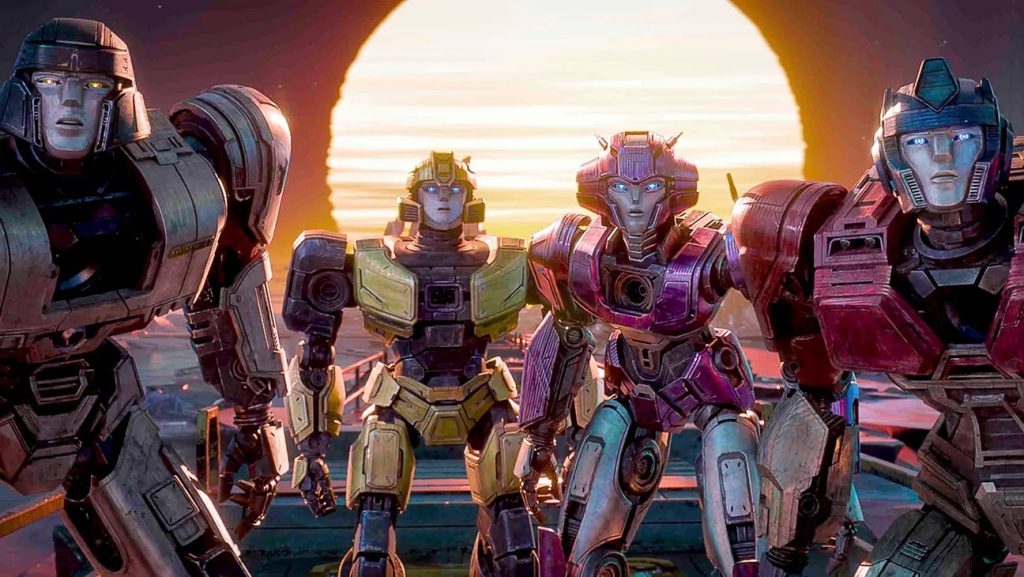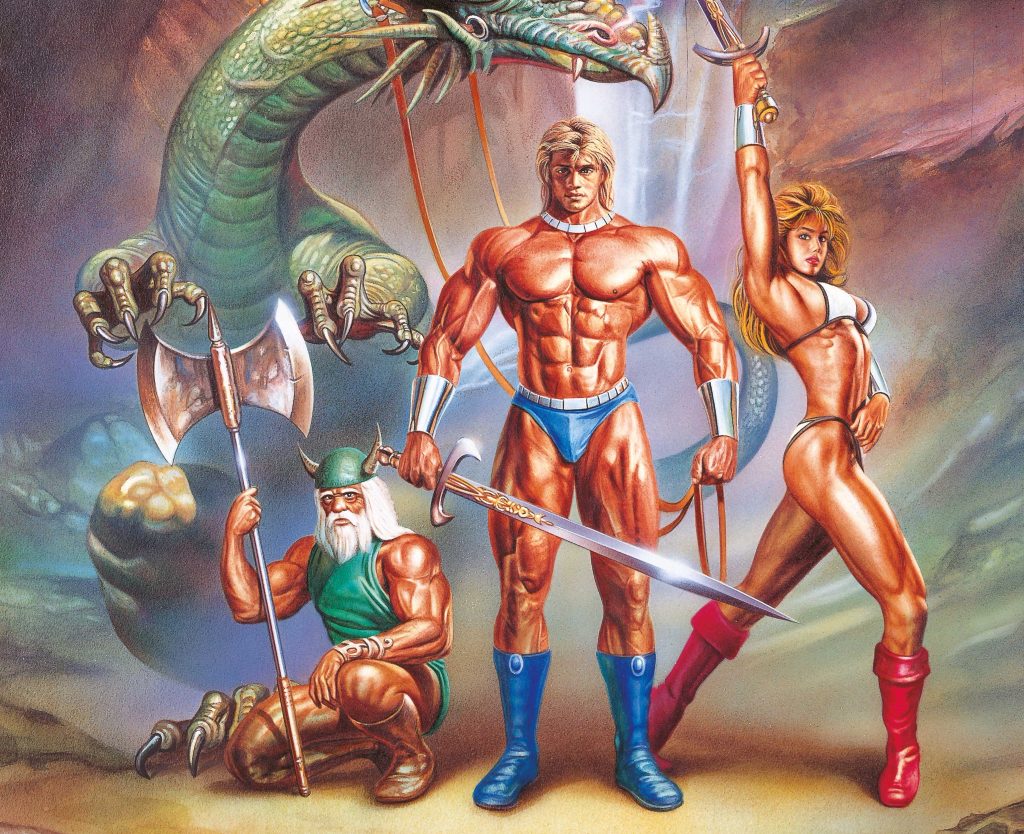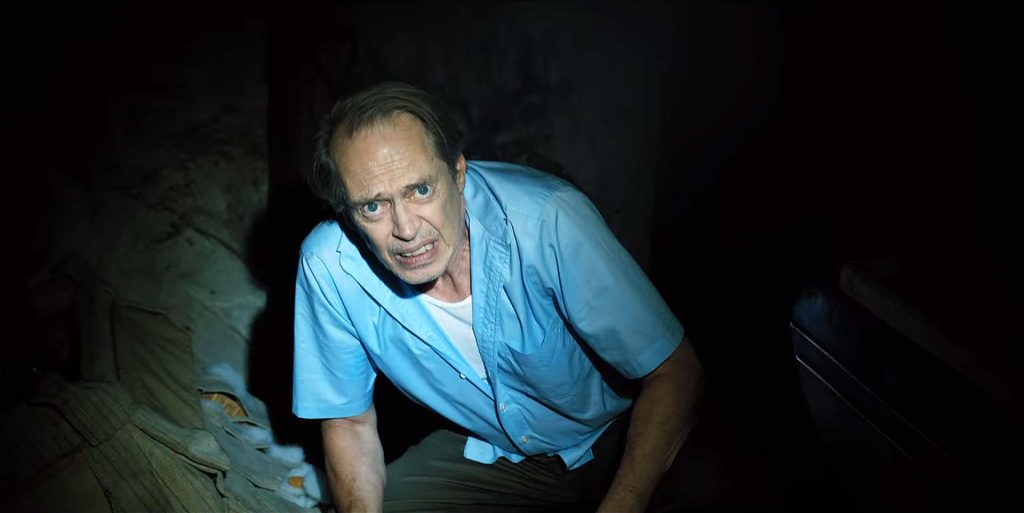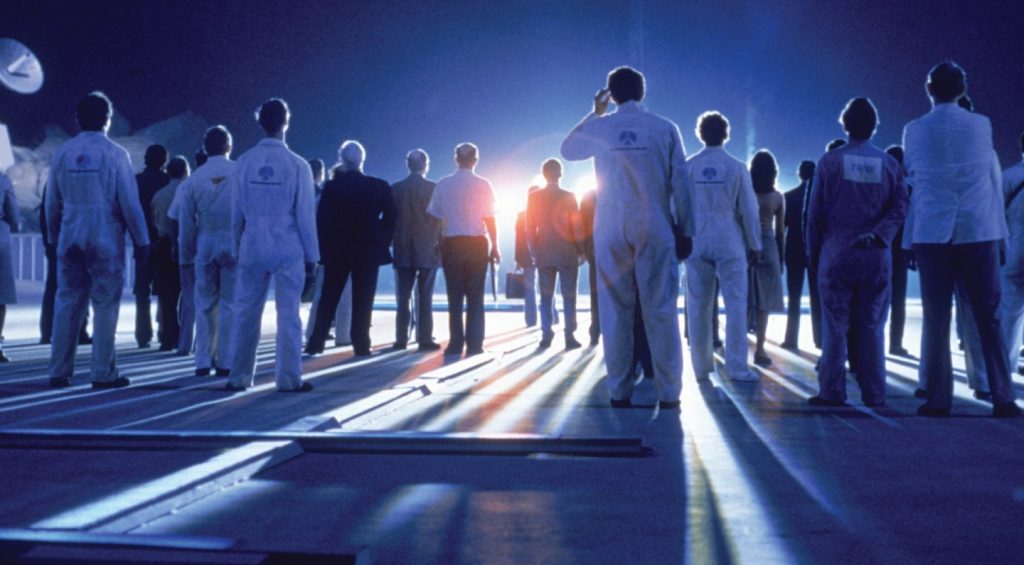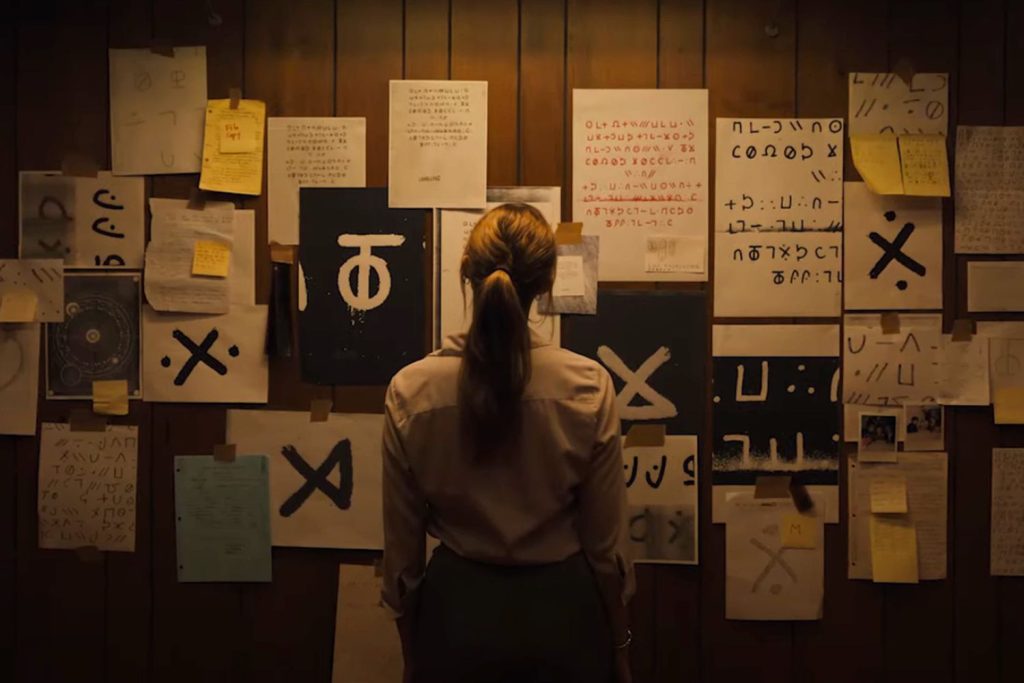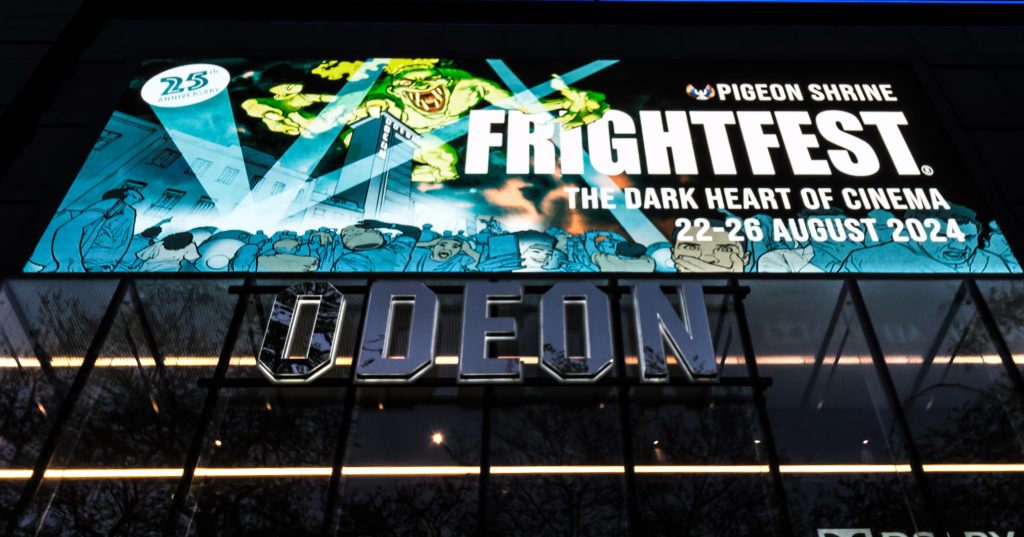Launching the next phase of big-screen MARVEL CINEMATIC UNIVERSE content with a character who died in the big, phase-ending AVENGERS: ENDGAME is a brave move. There’s not much you can do with a dead character, let alone one whose body was never recovered from the planet Vormir, but when that character has as fascinating a comic book history as the BLACK WIDOW, it’s an easy sell. Let’s uncover her four-colour past….
Natalia ‘Natasha’ Alianovna Romanova first appeared in Tales of Suspense #52 (1964), a book that at the time was spotlighting the adventures of Iron Man as part of a run that also introduced future Iron Man arch-enemy the Mandarin, future Avenger Hawkeye, and sidekicks Happy Hogan and Pepper Potts. The early Iron Man stories leant heavily on the Cold War; no surprise since the Cuban Missile Crisis was fresh in the minds of American comic book readers. Having already tussled with such Soviet super-soldiers as the Red Barbarian, the Crimson Dynamo, and, erm, Nikita Khrushchev, the latest threat to Tony Stark’s dual existence came not from a powerful man (although the issue did mark the return of the Dynamo) but from a captivating beauty, presenting herself as Madame Natasha. In reality, Natasha was the Black Widow, a master spy loyal to the Kremlin. At the end of her first appearance, the Widow had failed in her mission and was abandoned by her Soviet spymasters. On the run, she attempted to return to the good graces of the USSR by seducing Stark, who by now was aware of her duplicity but still underestimated her guile. She again failed and escaped once more, returning to pick up hapless archer Clint Barton, himself on the run after being wrongly accused of robbery.
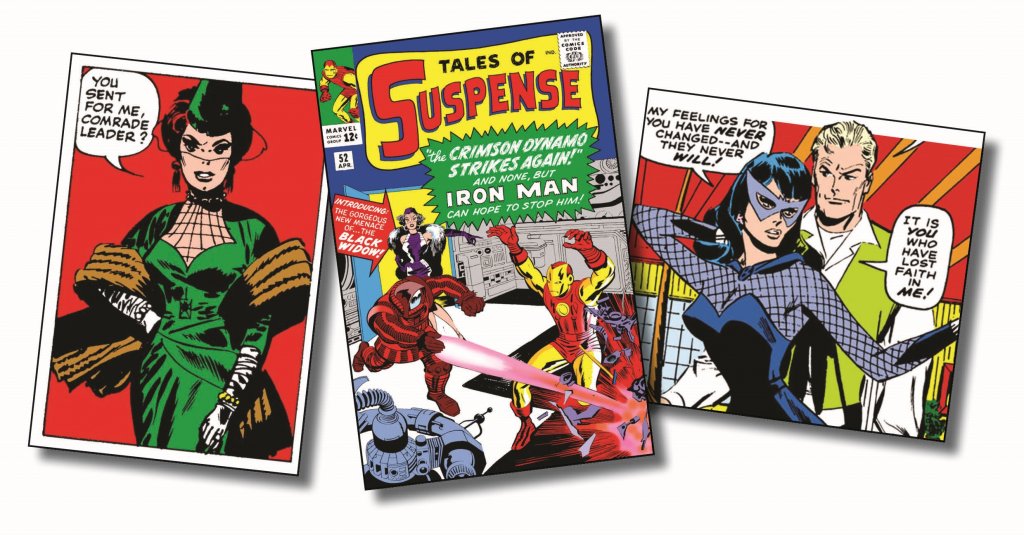
Together, a lovelorn Hawkeye and the Black Widow tried to steal Stark tech but were frustrated by Iron Man, after which Black Widow returned to the USSR. She came back to inveigle Hawkeye into another scheme, this time in a new, tricked-out costume that allowed her to walk on walls and fire ‘spider bites’, deadly venom blasts. Failing once more, and considering defection to the USA because of her love for Barton, the Widow was gunned down by her spymasters, and spirited away back to Russia from her hospital bed.
Black Widow’s origin story has changed over the years, perhaps fitting for someone whose past is shrouded in espionage and mystery. Natasha was not even the first Marvel character to go by the name; a hero by the name Claire Voyant (yes, really) appeared in Mystic Comics in 1940, killing wrongdoers and sending them to Hell for her master, Satan. Look, it was a different time, and let’s not judge history too harshly.
The original backstory for the Black Widow had her raised by a man named Ivan Petrovich, who found her as a young child with her dying mother at the Battle of Stalingrad in 1942. Later retcons had her in Petrovich’s care earlier than that, but regardless, she entered the Soviet spy program to prove her loyalty to Petrovich and her homeland. That origin, fleshed out in the Black Widow’s earliest solo adventures in Amazing Adventures in 1970, was later overwritten by a revised history, one that saw Natasha raised as part of the Black Widow Ops program, trained in the Red Room alongside other young women, and given biological enhancements that would explain her longevity. As part of a deep cover operation, Natasha was also given false memories, the story she told in her earliest adventures.
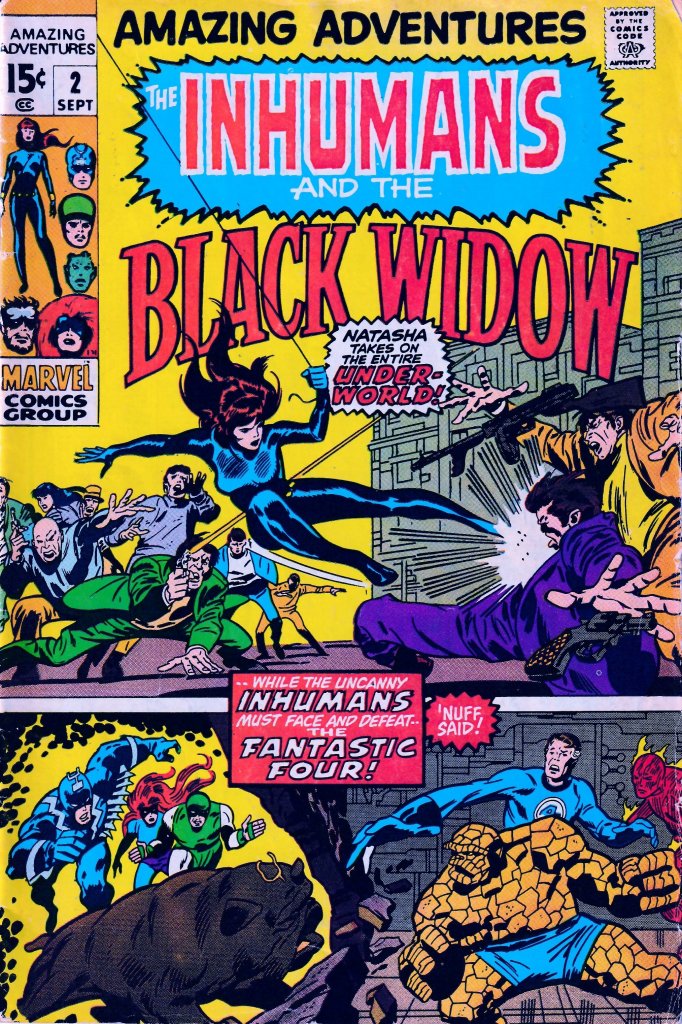
Still under Soviet control, the Black Widow returned to the US and hired the Swordsman and the first Power Man to attack the Avengers with her. By now, Hawkeye had gone straight and joined Earth’s Mightiest Heroes, and his presence broke through the brainwashing of her puppetmasters, so she defected, joining the Avengers as an associate member.
A woman of her talents could not remain free of the spy world, however, and Nick Fury recruited her to be an agent of S.H.I.E.L.D. In order to take the assignment, she had to publicly disassociate herself from the Avengers, and break up with Hawkeye, which led the American public to regard her as a traitor once more.
Her first mission – to China to spy on the Mandarin – went poorly and she was captured, which led to the Avengers and the Widow’s ex-husband, the Soviet hero Red Guardian, coming to her rescue. Natasha was successfully retrieved, but the Red Guardian died in the resulting battle. Returning to the US, the Black Widow decided to give up the life of a costumed adventurer, although she remained in a relationship with Hawkeye.
This was to prove short-lived, as a bored Natasha accepted another S.H.I.E.L.D. mission, which again went awry and needed intervention from the Avengers. After this, the Black Widow decided enough was enough and left the team to strike out on her own, eventually settling in San Francisco, where she found herself in a relationship with Daredevil.
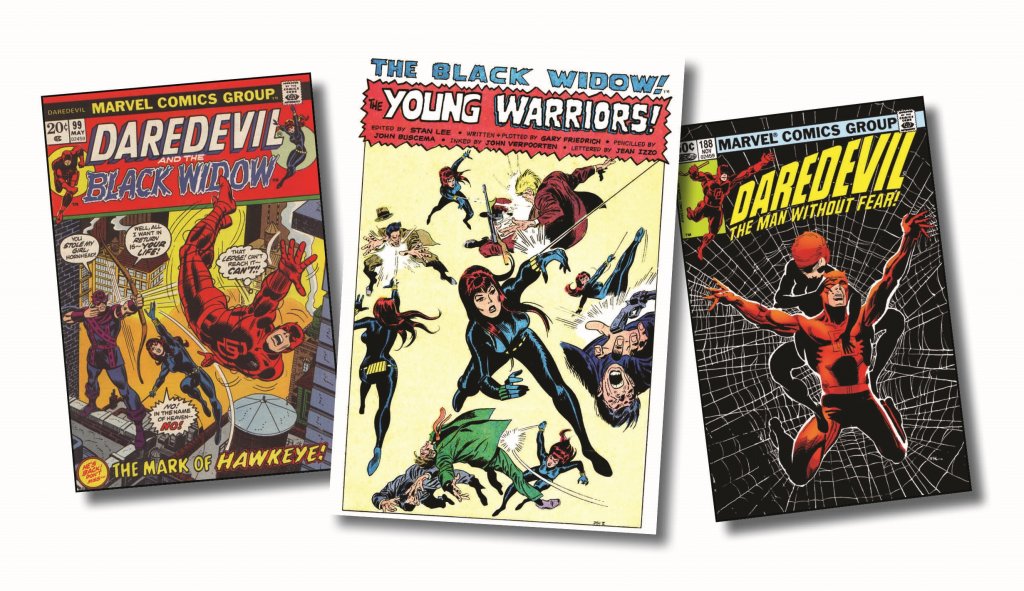
For a while, Daredevil’s comic book was retitled, at least on the cover, to include the Black Widow, and the two made quite the couple, swinging around the city’s Victorian neighbourhoods, but all good things come to an end, and Natasha was on her travels once more. She ended up in Los Angeles, where she formed one of the oddest superhero teams, the Champions, with the demonic do-gooder Ghost Rider, half-god Hercules, and Angel and the Beast from the original X-Men. Always a bit different, the title ended in 1978 after seventeen issues when the team went bankrupt, but did notably manage a storyline that reduced Magneto and his Brotherhood of Evil Mutants to babies!
Later that year, the Black Widow re-joined the Avengers in time for the legendary Korvac Saga but didn’t stick around past the conclusion of that story. Instead, she went solo once more but kept being brought into the orbit of Daredevil, whose title at the time had been revitalised under Frank Miller. It’s hard to believe now, after years of dross, but Miller’s writing was compelling and his art innovative, and Daredevil became a critical success under his control, with storylines such as the death of Elektra earning a dedicated following.
Daredevil’s Matt Murdock never had much luck with the ladies, and Natasha too fell afoul of his curse when she was killed by the supernatural ninja clan the Hand, in Daredevil #188. Resurrected by Daredevil’s associate Stone (who also did the same for Elektra), the Black Widow struck out on her own again, making sporadic appearances throughout the Marvel Universe during the 1980s, but always returning to Daredevil, in whose book she became an occasional guest star.

In 1991, as they do with alarming regularity, the Avengers decided to shake up their membership and invited their alumni to select the new roster. Earning a place on the team, the Black Widow remained with the Avengers through to the end of the first volume of their title, a run of seventy-four issues, until 1996’s Onslaught Saga, which saw the core Avengers exiled to another dimension, where they could appear in a poorly drawn comic book by Rob Liefeld. This new team – Captain America, Thor, Iron Man, Vision, Hawkeye, Scarlet Witch, Hellcat, and the Swordsman – starred in Avengers Volume Two, which lasted for just over a year until the experiment was deemed a failure and the characters folded back into the mainstream Marvel Universe.
This kicked off a third volume of The Avengers, and Natasha became an occasional team member but was kept busy by her first solo title, launched as part of the Marvel Knights range of comic books overseen by future Marvel head honcho Joe Quesada. This first series, one of several limited runs over the next few years, introduced another Black Widow into Natasha’s life in the shape of Yelena Belova. Also trained in the Red Room, where she claimed she received higher scores than her rival, Belova became a recurring figure in Natasha’s story and was every bit as conflicted as the original Black Widow as to her motives and true calling. Belova later died in a clone storyline every bit as complicated as the famous Spider-Man one.
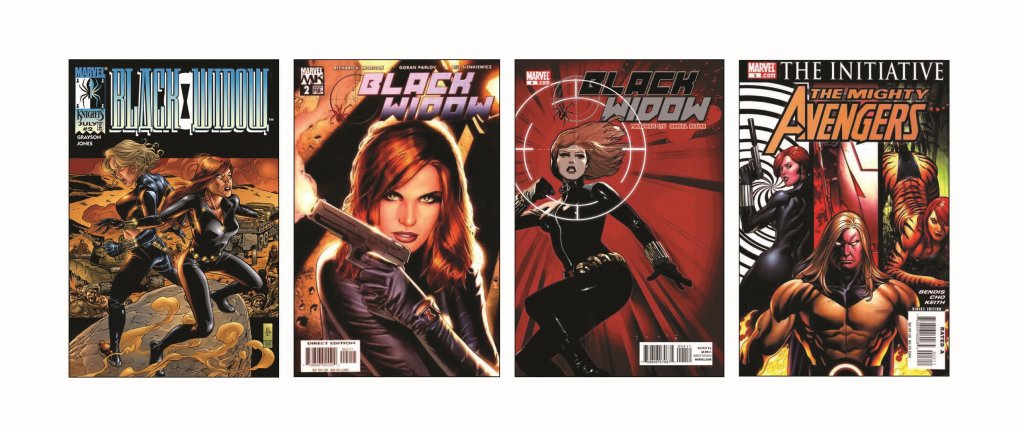
The appearance of a second Black Widow led Natasha to discover her true origins and the revelation that other young women underwent the same ordeal. This would influence her character over the coming years, and she would eventually go on a hunt for other Black Widows and the men who created them. Finding that the Red Room was in league with American corporation Gynacon, she tracked down and killed the heads of both organisations, which led to her being branded America’s most wanted criminal.
Nick Fury, though, cares not for such things, and involved Natasha in bringing down the government of Latveria, Doctor Doom’s former kingdom, and then wiping her memory afterwards. Her legal status was settled when the Superhero Registration Initiative was enacted, which led to the superhero Civil War. Natasha complied with the act, was pardoned and guided a task force for her old enemy Iron Man, the man behind the Initiative.
Two competing teams of Avengers were formed as a result of the Initiative, one legit and the other not so much. Natasha joined the official team, alongside Iron Man, Ms (later Captain) Marvel, the Wasp, and others, while Luke Cage and Captain America led an outlaw team. This was a point when Marvel lurched from line-wide crossover to line-wide crossover, and Civil War soon gave way to The Siege, in which Norman Osborn took over the Initiative and did terrible things (Natasha assumed the identity of Yelena Belova to infiltrate Osborn’s administration), and then Secret Invasion, when it was revealed that a bunch of prominent Marvel characters had been replaced by the shape-shifting alien Skrulls years before.

This crisis was the catalyst for Natasha to leave the Avengers once more, and she returned to solo adventures, appearing in more self-titled limited series before finally being given an ongoing title of her own in 2010. Scripted by paranormal romance novelist Marjorie Liu, the series set the Black Widow off on a hunt for whoever ordered a hit on her, eventually leading her to uncover a massive conspiracy against spies led by rogue Russian agent Alexi Shostakov.
With Natasha encountering Elektra, Hawkeye, and Mockingbird along the way, as well as a cadre of Russian superheroes including a new Crimson Dynamo, the story closed out the Black Widow series, and our hero once again joined the Avengers, this time a ‘secret’ incarnation led by Steve Rogers, before aiding the main team in their battle against the X-Men. The Black Widow even died for a second time, killed in an explosion while trying to rescue people from Earth, which was destructing as part of an incursion by an Earth from another reality.
Once again, death didn’t take, and the rebirth of the multiverse saw Natasha resurrected. She returned to a life of espionage but found herself on the run from S.H.I.E.L.D. after being framed by the Weeping Lion. Tracking the Lion, Natasha discovered that the Red Room’s former headmistress had resumed her activities, opening up the Dark Room Academy and training innocent young girls to become living weapons. Finding the two linked, Natasha ended the activities of the Dark Room and led the girls to a life of safety, although only after they had exacted their revenge on the Weeping Lion.
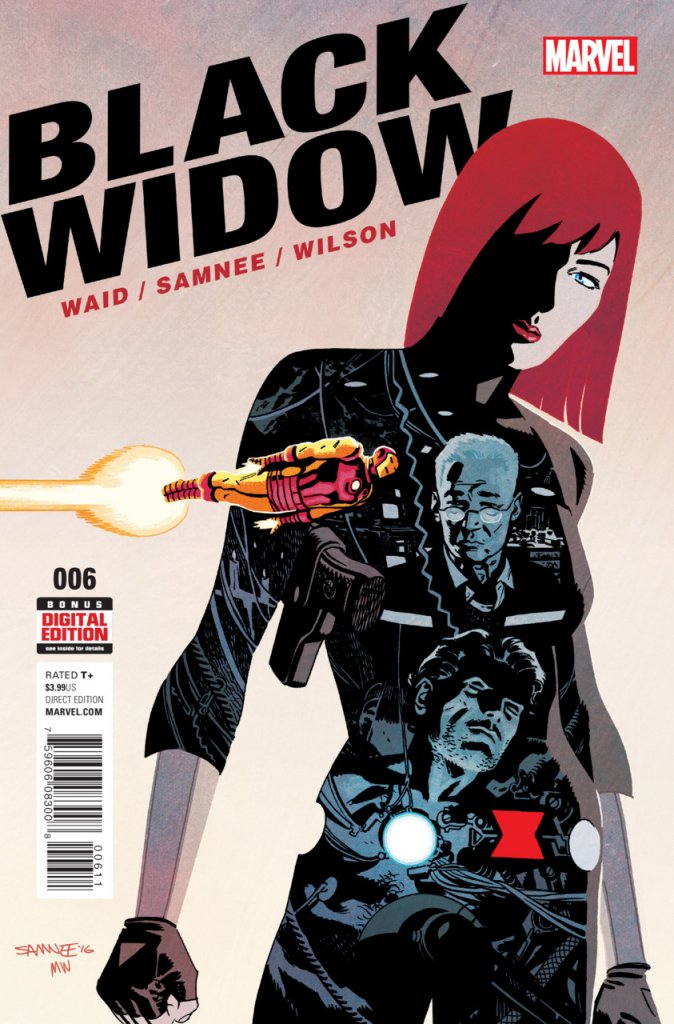
The world was turned upside down when Steve Rogers declared his loyalty to Hydra and proclaimed the USA to be Hydra territory under his control. The resulting Secret Empire storyline, which resonated throughout the Marvel Comics line, saw the remaining heroes hunkering down and forming an underground resistance to Hydra’s tyranny. The Black Widow joined them and vowed to stop Rogers by killing him, but before she could carry out her assassination, she stumbled across a group of young heroes calling themselves the Champions. Enlisted into training them for the horrible new world, Natasha kept her plan on the backburner.
One of the Champions was the Miles Morales Spider-Man, and he had been prophesied to kill Rogers by an Inhuman precognitive. Seeking to take the burden of murder from the young man’s shoulders, Natasha vowed to carry out her own takedown of Rogers, but things went awry and Spider-Man confronted Rogers alone. Just as Rogers was about to deny the prophecy and end Spider-Man’s life before he could end his, Natasha appeared and took a killing blow meant for Spider-Man, snapping her neck and killing her instantly. Spider-Man flipped, and savagely beat Rogers, but did not kill him after Natasha had urged him not to have murder on his conscience.
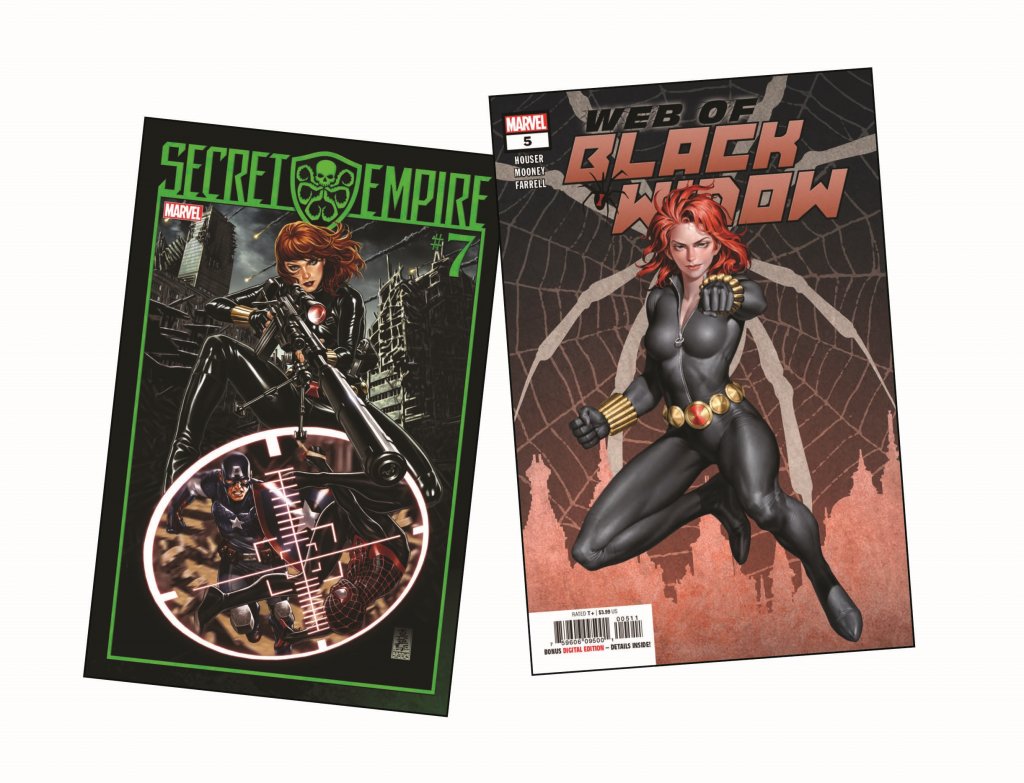
The Secret Empire was eventually overthrown, and things have returned to normal – or as normal as things ever get – for the Marvel Universe, with one big exception: the Black Widow is dead. Yes, she’s been dead before and it hasn’t stuck, and just like her Marvel Cinematic Universe counterpart, this hasn’t stopped her appearing in comic books, with 2019’s Web of Black Widow acting as a ‘year one’ origin story, much as May’s movie will do for Scarlett Johansson’s Natasha Romanoff. And with rumours of a multiverse in the MCU being at the forefront of Phase Four, we might not have seen the last of either Natasha yet…
BLACK WIDOW will be released July 9th in cinemas and via Premier Access on Disney+
[This article was originally published in issue 471, April 2020]

